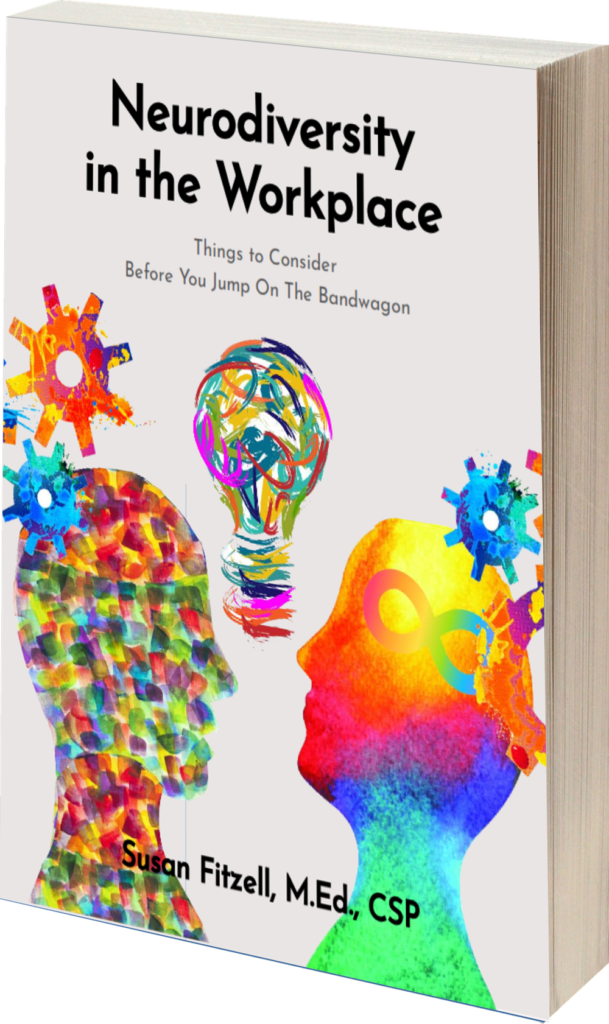
Or, how to present information effectively at work?
Learning new skills and adding to an existing skill set is essential for every employee in your organization. But every individual learns slightly differently and at a different pace.
Even more importantly, you need to ensure that employees, especially neurodivergent employees, retain and process new information in a way that enables them to hang onto as much of that information as possible.
Why would I focus just on introducing new material? As a former teacher, presenting new material effectively was key to my student’s success. Understanding that not everyone learns the same way and varying presentation techniques is the key to success regardless of the learner’s age.
It’s no different in the working world — in fact, for neurodivergent employees, learning new material can be more difficult because their focus must shift from an output mindset (completing their assigned work) to a receptive learning mindset.
Learning Management Systems (LMS) do an excellent job presenting information that needs to be retained and understood by every employee — such as diversity and equity training or harassment training.
But there are many times when a team or an individual employee needs to learn information that is more specific to their responsibilities. It’s important for career development as well as making an impact on performance. For example, A new VoIP phone system is rolled out companywide with many new features, including better integration with customer contact lists. But, as with all new software, there’s a learning curve. How can a manager train their team to use all the new features they need to know without overwhelming them?
45% — of employees spend at least 15 minutes searching for information previously discussed. (Source: Entrepreneur)
77% — of trainers spend at least 15 minutes explaining concepts over again.
65% — of learners will completely forget new information if they don’t apply it within a week! (Source: HBR)
As these statistics indicate, absorbing new information is challenging for most employees — even when they want to retain what they’ve learned! Realistically, it may take more than one session for employees to learn new information well enough to implement what they’ve learned.
Seven Strategies to Introduce New Information to Your Team
- Deliver new information in short, targeted sessions.
- Use large imagery and bold colors in your slide deck. Choose large images and text that pop with color. Just don’t put too many different colors on one page.
- Don’t clutter slides with too much text. Less is more. One to three bullets is ideal.
- Pique their curiosity: short training sessions can keep employees curious and excited to learn more.
- Add a practice exercise: Whether it’s a group discussion, a simulation, or a team project, applying new knowledge in an interactive environment will stimulate retention through active recall.
- Follow-up. This is the ONE and yet most important practice that can make the difference between implementing the learning or not, and it is rarely done! Send a follow-up email after the presentation outlining the critical information covered. Employees, especially neurodivergent employees, can refer back to this email anytime they need a refresher.
- Notice when you see your employees implementing their learning. Say, “I see you are making effective use of your training. I appreciate your effort.” Never underestimate the power of positive feedback.
Photo Credit: FS-Stock / iStock Standard License
CLICK HERE to visit the articles page.
 FREE DOWNLOAD: Neurodiversity in the Workplace: Things to Consider Before You Jump On the Bandwagon
FREE DOWNLOAD: Neurodiversity in the Workplace: Things to Consider Before You Jump On the Bandwagon
Neurodiverse hiring practices can benefit any company in any industry and in more areas than most people realize. The investment has yielded greater patenting, innovation, process improvement, efficiency, and creativity not only in technology industries but also in industries that include investment banking, insurance, and mortgage banking.
This resource explains the term “neurodiversity” and describes the potential positive impact on your business that can come from including neurodivergent individuals in your workplace.
Download Neurodiversity in the Workplace! – Free!
Bring Susan Fitzell, M.Ed., CSP
Top Neurodiversity Speaker
To YOUR Organization!
References:
https://blog.coursera.org/the-science-behind-how-your-employees-learn/
https://hbr.org/2019/10/where-companies-go-wrong-with-learning-and-development
https://elearningindustry.com/information-processing-basics-how-brain-processes-information

 FREE DOWNLOAD: Neurodiversity in the Workplace: Things to Consider Before You Jump On the Bandwagon
FREE DOWNLOAD: Neurodiversity in the Workplace: Things to Consider Before You Jump On the Bandwagon